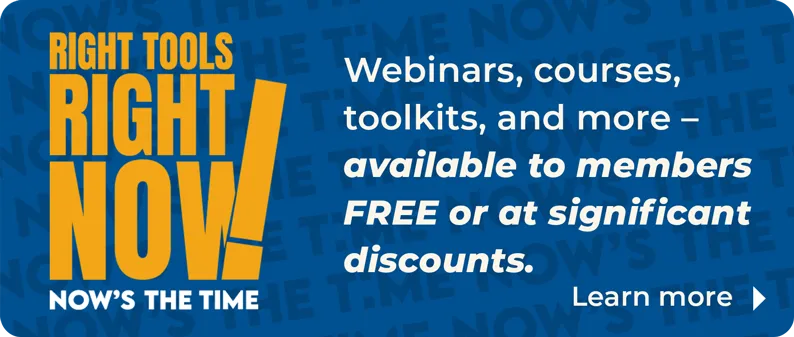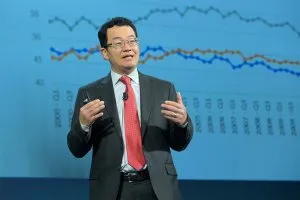
Rummaging through my desk the other day, I came across a small gift from a former manager. Years ago, in what now seems like another lifetime, I worked at an organization that was experiencing significant change under a new vice president. Knowing that changes were ahead, the new VP gave everyone a framed card as soon as she came on board: “To be outstanding, get comfortable with being uncomfortable.”
Looking at it now, that statement seems to accurately reflect what needs to happen in today’s environment. First, it acknowledges the emotion we feel when experiencing significant changes and transitions—discomfort. But it also leads to a great question: How do we get to a place of being comfortable when there’s little comfort to be found?
Moving from Fear to Empathy
That’s the question on the mind of our imaginary friend Andrea Evelyn Smith, or AE, as she likes to be called. When we last met with AE, she’d had a workforce analysis completed and a great team was in place (“Getting Your Organization Into Alignment,” Fall 2023). But after a year of dealing with profound business and personal changes, AE found herself getting easily triggered and angered. This led to her being critical of other people and situations involving the changes. She heard herself starting many conversations with the idea of not understanding why things happened the way they did, second guessing decisions that were made, and generally feeling that things were just not meant to turn out this way.
One morning, she realized she was doing a lot more complaining than encouraging. So, she reached out to her mentor. At the end of their discussion, her mentor asked her one simple question: “Who do you want to be during change?” The question hit AE at her core, and she knew she needed to behave differently if she wanted to be seen as an effective leader. She understood she had been operating from a place of uncertainty and decided in that moment to be intentional in her behavior going forward.
For AE and many of us, experiencing change is similar to grieving. You and your staff may go through the same emotional stages that you would with the loss of a loved one. But by being intentional in your response to change, you project strength. Your staff—and often your members—can then take their cues from you.
As we learn, we go through several stages, and we can meet these stages with a variety of attitudes. We can start by identifying behaviors sparked by fear. These might be different for everyone, but here are a few common behaviors that are fear-driven: anger about things we can’t control; criticism of others; frequent complaining; being easily triggered and angered; and not least of all, acting against our own self-interest.
As a result of her mentor’s question, AE took a mental inventory of her emotions and the responses that ensued. She made a deliberate decision to accept that she had no control over the changes that were underway. This meant she needed to embrace the changes and work with them.
First, she decided that before reacting, she would fully evaluate the information coming her way and recognize it might not contain all the answers she needed. But she would make decisions based on the information at hand, knowing she might have to adjust those decisions later.
AE also thought about the people around her and started to feel empathy for them. After all, they were also facing change. She realized that everyone was trying to do their best. As she reflected on a recent situation in which she had, to her regret and dismay, lashed out at a staff member, she realized she didn’t have the full story before reacting. So, she paused and shifted her mindset toward having full awareness of a situation before responding in the future. That way, she could choose to respond with intentionally positive emotions. As a leader, she couldn’t afford to be seen as someone who was negative about change. After all, a leader is someone others want to follow, and who wants to follow negativity?
"A leader is someone others want to follow, and who wants to follow negativity?"
The Learning Zone
People have likened the changes taking place in residential real estate to flying a plane while building it. Sounds scary and unrealistic, doesn’t it? There’s so much we don’t know and will have to figure out as we go. We don’t want to get it wrong or appear foolish. That’s normal, but it’s not a response that helps us evolve. By working with intention, we will almost certainly gain new skills and increase our knowledge. We will grow. And growth is the end state of learning. That’s where we want to be.
Years ago, I dealt with a situation where a supervisor was challenged by the finance team on the sizeable budget for a corporate initiative. Meetings were scheduled, voices were raised, and a stalemate ensued. It wasn’t resolved until the supervisor stepped back from the situation and realized the finance team didn’t have the whole picture. They were looking at other line items in the supervisor’s budget and assumed those funds were sufficient to cover the new initiative. Once the supervisor helped them realize those line items covered other, preexisting organizational needs, the finance team understood the reason for additional funding.
This is an example of someone moving from the fear zone (reacting) to the learning zone (being intentional). We want to take a minute to evaluate and understand a situation before we react. Only then can we respond appropriately and to everyone’s benefit.
What a Difference!
As for AE, in just a few weeks, she was already noticing the difference in her interactions with others. In fact, people were thanking her for her leadership during a challenging time.
With the deliberate change in her behaviors, AE developed new skills. She was taking each day as it came, with a strategic eye to the future. She was much more empathetic with others and found joy in spreading optimism and hope. There was also an observable difference in how her team was responding to members. They had more energy and renewed engagement. The impact of AE deliberately taking action to lead spread to others.
AE’s story demonstrates how we can all benefit from being adaptable and willing to address our own attitudes. The world around her was changing, but so was she. There was a ripple effect that spread to other areas of her life and those around her. The moral of AE’s story? Grow with the change, and you will change, too.
Oh, and that framed card? It’s still on my desk.








